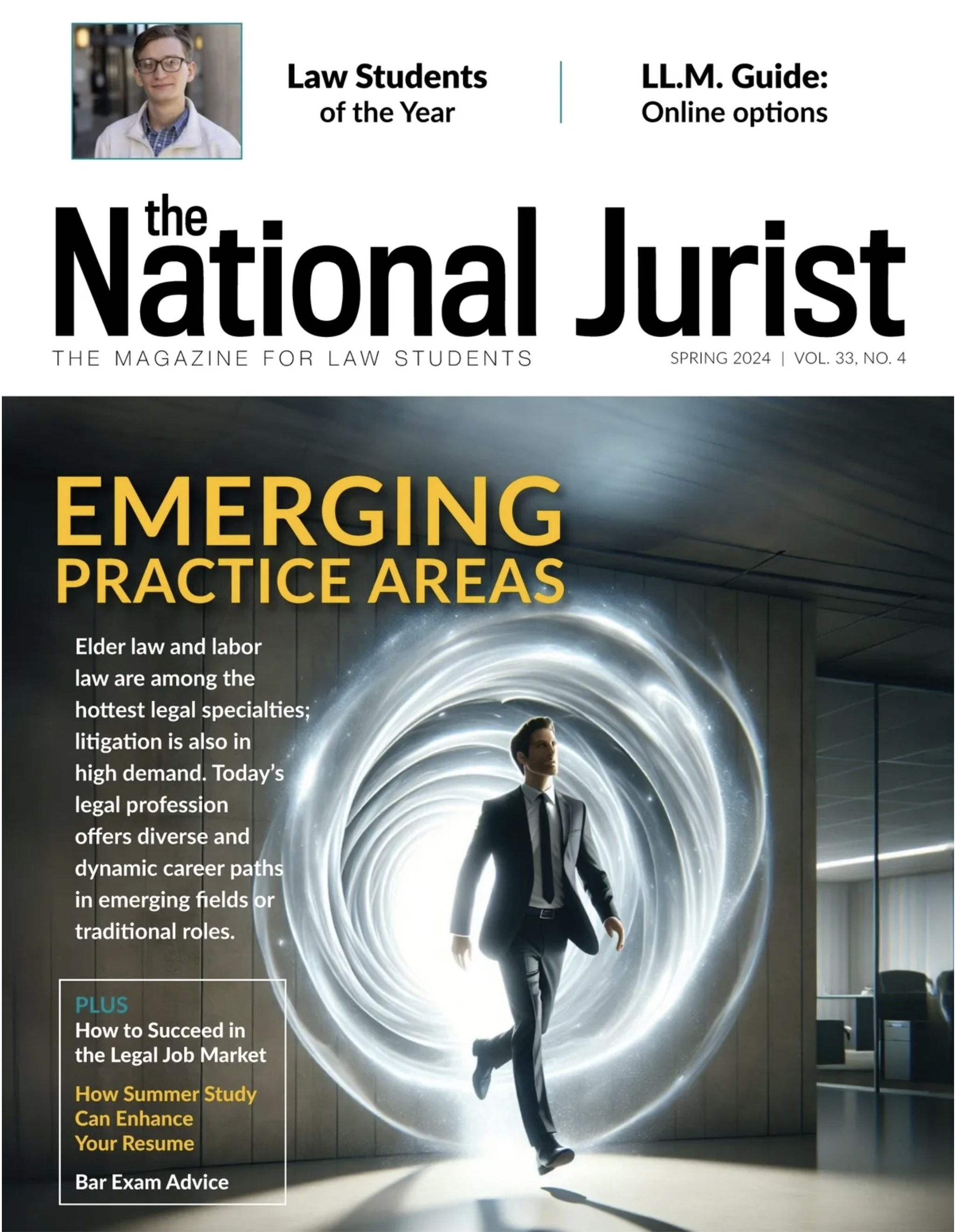The National Association of Law Placement (NALP) recently released employment data for the class of 2021.[1] The numbers highlight an entry-level legal job market that is as robust as it has ever been. Almost 92% of law graduates found full-time, long-term employment, tied for the highest rate in more than 30 years. A record 78% of these graduates secured jobs that required a law license. The median salary reached $80,000, with a median of $131,500 among graduates working in law firms. Both figures are all-time highs. Lastly, the proportion of employed graduates who were seeking other employment, a measure of job satisfaction, was less than 9%, its lowest ever.
This report is historically good. It reflects much hard work and effort by the graduates and their law schools. The report also aligns with the trend of low unemployment throughout the economy. But the most critical factor captured by the data is the alignment between law school enrollments and the legal job market. This balance is a departure from a decade ago when law schools were minting far more graduates than the legal job market could absorb.
For decades, the law degree was seen as a sure path to a stable, well-paying career. And while the certainty of these outcomes was commonly overstated, the legal job market has a long track record of resilience. Unemployment in the “legal occupations” sector (of which lawyers make up the bulk) is practically always lower than the overall rate. In an analysis of jobs data that I conducted in 2020, I found that between 2007 and 2018, the average unemployment rate for the sector was 2.3%, about one-third of the overall average of 6.5%. Lawyer salaries also tend to be high. In 2019, the median salary among lawyers was $122,960, more than three times the $39,810 median for workers overall.
This combination of employment stability and high pay has fueled the popularity of the law degree. During my tenure as admission dean at the Bowen School of Law in Little Rock, we typically received about ten applications for every seat in the class. For example, during the 2010 cycle, we received 1,617 applications for an entering class of 157. Interest was so high in 2009 and 2010 that I offered “scholarships” to incoming students who were willing to defer their admission to the next year. We had literally run out of space.
The application boom culminated in fall 2010, when a record 52,488 students nationwide began law school. On the surface, legal education was thriving. Enrollments were up. And while tuition and loan debt continued to rise, the backend rewards seemed well worth the front-end risks. But the entering class of 2011, my last as an admission officer, would be my first to ever fall short of the enrollment target. The deficit was small, a few students. But just a year earlier, I was paying people to stay home.
This softening of applicant interest was part of a national trend. That year, the number of applicants nationwide fell to 78,881, almost 10% lower than the 2010 record. First-year enrollments also dropped 10%, to 47,556. These were unprecedented declines. And they were tied to the trailing effects of the Great Recession. The employment rate for the class of 2010 was 87.6%, the lowest in 14 years and the second consecutive decline. In addition, median and average salaries each fell $9,000.
The latest employment numbers represent a significant victory for legal education. New ideas merged with the new realities to great results. Not even a pandemic could slow this momentum. But while the hard times are gone for now, they should not be forgotten, particularly given the human toll. Thousands of law graduates unlucky enough to enter the job market during those times are still facing the negative impacts. Their stunted launch laid the foundation for depressed outcomes and discontentment that for too many have persisted.
These graduates are real life examples of the potential perils that lay within the latest employment numbers. If interest in the law degree increases and larger classes are enrolled without regard to the job market, we run the risk of another harmful market asymmetry. Law school enrollment practices directly influence the job prospects of graduates. Unfortunately, law schools continued to increase enrollments even after the impacts of the Great Recession began to become clear.
In 2007, the unemployment rate for the legal occupations sector rose. The rate of 2.3% was a full point higher than the 2006 rate of 1.3%. In 2008, the first full year of the Great Recession, the legal occupations unemployment rate rose again to 2.6%. The rate was 3 percent or higher in four months that year, compared to two months in 2007 and none in 2006. More acutely though, the number of lawyer jobs declined by more than 2,000 in 2008, far from a disaster, but also far from the increase of more than 8,000 jobs the year before.
Warnings came from other corners as well. A Client Advisory published in January 2008 by Hildebrandt and the Citi Private Bank described dramatic declines in demand for law firm services in 2007. The trends sprang from “a growing sense of uncertainty in the economy spawned by fears of a recession and resulting in an overall slowing of economic activity.”[2] The report described the downturn as a “perfect storm,” asserting that it was going to be uncommonly deep and prolonged.
As time progressed, the warnings grew louder. In 2009, unemployment in the legal occupations sector rose to 3.4%. Law firms started deferring new hire start dates and imposing layoffs. Along practically every relevant indicator, things were bad and getting worse. Meanwhile, law school enrollments continued to rise. Between 2008 and 2010, first-year enrollments rose 6%, which translates to more than 5,300 extra students. It was not until application volume began its steep, years-long decline that enrollments would fall.
The class of 2014 would see the beginnings of an improved employment picture, despite a still contracting legal job market. Through 2018, rising employment rates and salaries coexisted with declining numbers of entry-level law jobs. These seeming contradictions resulted from law schools producing fewer and fewer graduates. Declining interest in the law degree forced law schools to reduce class sizes, and the result was graduating cohorts that were better aligned with the job market.
In light of the latest employment data, law schools may see higher demand for seats in their classes. But schools should resist the temptation to increase enrollments without first attempting to tie those increases to the future legal job market. Such an undertaking is surely imprecise, but resources exist to aid the prognosticating. We are facing broad challenges — unyielding inflation, an unending pandemic, a fraught political environment and the possibility of a recession. Today’s bounty may be a distant memory in the coming years. We owe it to our students to keep this in mind.
Aaron N. Taylor is executive director of the AccessLex Center for Legal Education Excellence.
[1] https://www.nalp.org/uploads/PressReleases/NALPPressReleaseSelectedFindingsJuly2022.pdf
[2] http://s.wsj.net/public/resources/documents/WSJ080128_2008_Client_Advisory.pdf







